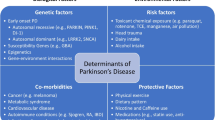Abstract
Spinocerebellar ataxia type 3, also known as Machado–Joseph disease (SCA3/MJD), is an autosomal dominant neurodegenerative disorder with no current treatment. We aimed to evaluate the body mass index (BMI) of patients with SCA3/MJD and to assess the correlations with clinical, molecular, biochemical, and neuroimaging findings. A case–control study with 46 SCA3/MJD patients and 42 healthy, non-related control individuals with similar age and sex was performed. Clinical evaluation was done with the ataxia scales SARA and NESSCA. Serum insulin, insulin-like growth factor 1 (IGF-1) and magnetic resonance imaging normalized volumetries of cerebellum and brain stem were also assessed. BMI was lower in SCA3/MJD patients when compared to controls (p = 0.01). BMI was associated with NESSCA, expanded CAG repeat number (CAG)n, age of onset, age, disease duration, and serum insulin levels; however, in the linear regression model, (CAG)n was the only variable independently associated with BMI, in an inverse manner (R = −0.396, p = 0.015). In this report, we present evidence that low BMI is not only present in SCA3/MJD, but is also directly related to the length of the expanded CAG repeats, which is the causative mutation of the disease. This association points that weight loss might be a primary disturbance of SCA3/MJD, although further detailed analyses are necessary for a better understanding of the nutritional deficit and its role in the pathophysiology of SCA3/MJD.

Similar content being viewed by others
References
Durr A. Autosomal dominant cerebellar ataxias: polyglutamine expansions and beyond. Lancet Neurol. 2010;9:885–94.
Saute JA, da Silva ACF, Muller AP, et al. Serum insulin-like system alterations in patients with spinocerebellar ataxia type 3. Mov Disord. 2011;26:731–5.
Schmitz-Hubsch T, du Montcel ST, Baliko L, et al. Scale for the assessment and rating of ataxia: development of a new clinical scale. Neurology. 2006;66:1717–20.
Kieling C, Rieder CR, Silva AC, et al. A neurological examination score for the assessment of spinocerebellar ataxia 3 (SCA3/MJD). Eur J Neurol. 2008;15:371–6.
Klockgether T, Lüdtke R, Kramer B, Abele M, Bürk K, Schöls L, et al. The natural history of degenerative ataxia: a retrospective study in 466 patients. Brain. 1998;121:589–600.
Bauer PO, Kotliarova SE, Matoska V, et al. Fluorescent multiplex PCR—fast method for autosomal dominant spinocerebellar ataxias screening. Genetika. 2005;41:830–7.
Vedolin L, Schwartz IV, Komlos M, et al. Brain MRI in mucopolysaccharidosis: effect of aging and correlation with biochemical findings. Neurology. 2007;69:917–24.
Boy J, Schmidt T, Wolburg H, et al. Reversibility of symptoms in a conditional mouse model of spinocerebellar ataxia type 3. Hum Mol Genet. 2009;18:4282–95.
Aziz NA, van der Burg MM, Landwehrmeyer GB, et al. Weight loss in Huntington disease increases with higher CAG repeat number. Neurology. 2008;71:1506–13.
Marder K, Zhao H, Eberly S, Tanner CM, Oakes D, Shoulson I, et al. Dietary intake in adults at risk for Huntington disease: analysis of PHAROS research participants. Neurology. 2009;73:385–92.
Andreassen OA, Dedeoglu A, Stanojevic V, et al. Huntington’s disease of the endocrine pancreas: insulin deficiency and diabetes mellitus due to impaired insulin gene expression. Neurobiol Dis. 2002;11:410–24.
Acknowledgments
The authors would like to thank the patients and their controls for their participation in our study. This research was supported by the Brazilian funding agencies FIPE-HCPA, CNPq, FINEP, INAGEMP, and FAPERGS. MLSP, LVCP, and LBJ are supported by CNPq.
Financial Disclosure
None of the authors declared a conflict of interest.
Author information
Authors and Affiliations
Corresponding author
Rights and permissions
About this article
Cite this article
Saute, J.A.M., da Silva, A.C.F., Souza, G.N. et al. Body Mass Index is Inversely Correlated with the Expanded CAG Repeat Length in SCA3/MJD Patients. Cerebellum 11, 771–774 (2012). https://doi.org/10.1007/s12311-011-0326-6
Published:
Issue Date:
DOI: https://doi.org/10.1007/s12311-011-0326-6




